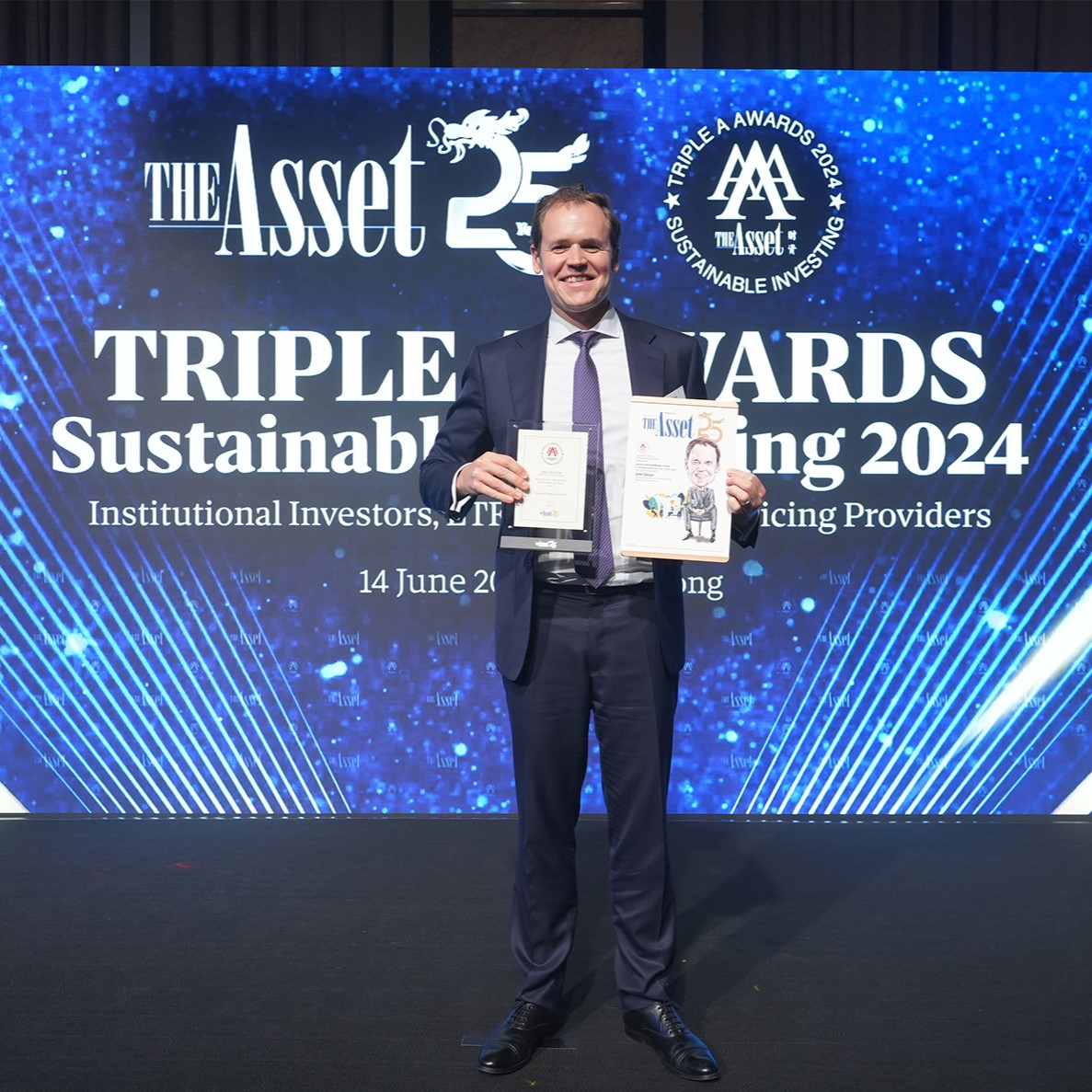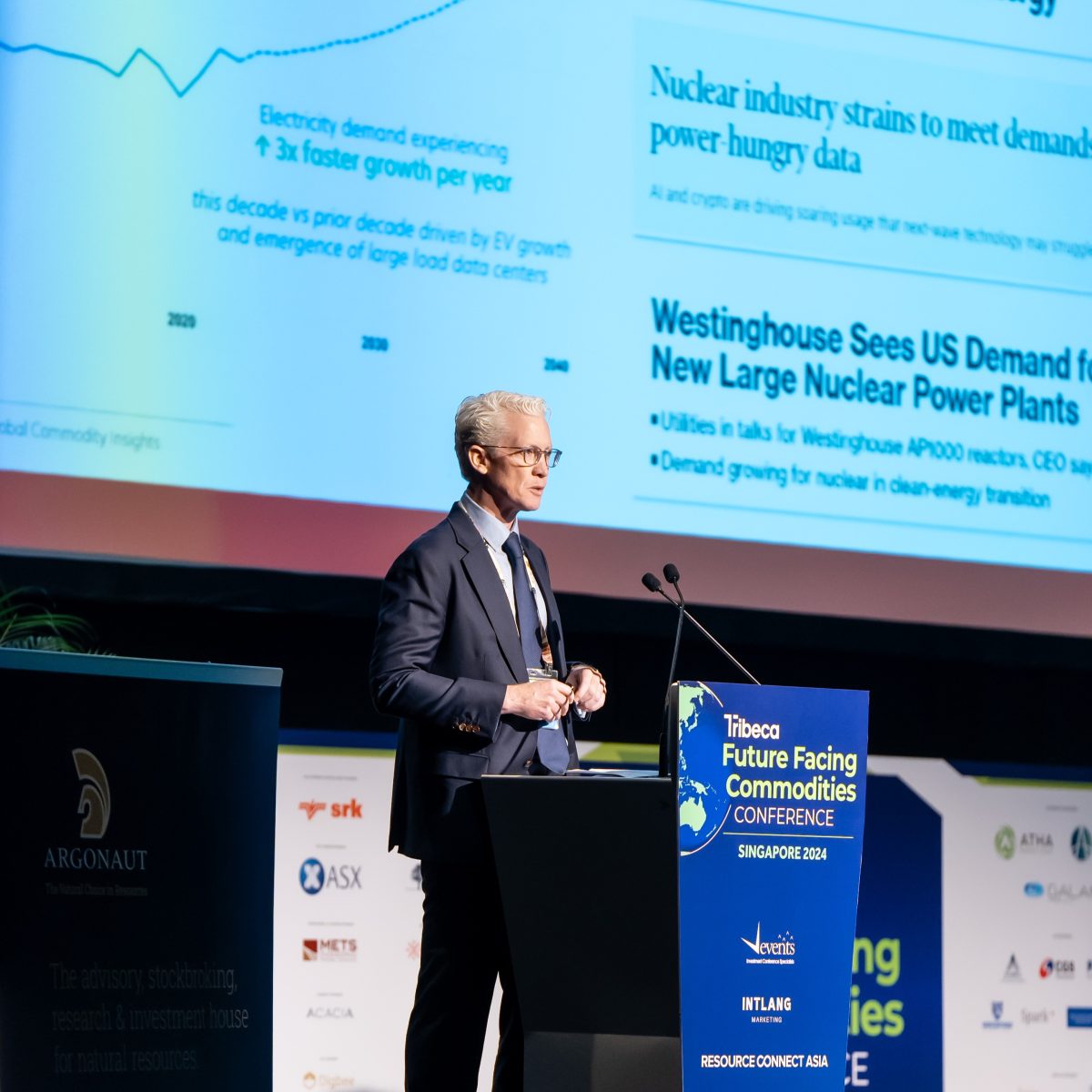John Stover, Portfolio Manager of Tribeca Asia Credit Strategy, Clinches Dual Awards as Fixed Income Fund Manager of the Year and Hedge Fund Manager of The Year at The Asset Triple A Sustainable Investing Awards 2024
John Stover, Portfolio Manager of Tribeca Asia Credit Strategy, has been recognized with two prestigious accolades at The Asset Triple A Sustainable Investing Awards 2024. Stover’s exceptional performance have earned him the awards of Fixed Income Fund Manager of the Year and Hedge Fund Manager of The Year, underscoring his outstanding outperformance to investing in the Asia-Pacific region.
Stover manages an actively managed long-short approach to investing in the Asia-Pacific credit market. In 2023, under his astute management, the fund achieved remarkable success, posting a remarkable return of 22.88%. This exceptional performance significantly outperformed both Asia and Global bonds, which recorded returns of 5.1% and 7.4% respectively. Since its inception, the fund has achieved a gross return of 48.2%, setting a high standard for excellence in the industry. This remarkable track record speaks volumes about Stover’s expertise and the effectiveness of the fund’s investment strategy.
Commenting on this remarkable achievement, John Stover expressed his gratitude, saying, “I am deeply honoured to receive these prestigious awards from The Asset Triple A Sustainable Investing Awards 2024. This recognition is a testament to the hard work, dedication, and expertise of our team, as well as our unwavering commitment to delivering value to our investors.”
The Asset Triple A Awards are the pre-eminent recognition for those that have excelled in their respective industry. With over two decades of experience conducting awards programmes, The Asset Triple A Awards have expanded year-on-year, reflecting unparalleled industry understanding to be able to distinguish best-in-class organizations. The Asset Triple A Awards programmes are built upon a stringent methodology that is combined with a rigorous approach in selecting the best institutions and deals. The awards are adjudicated by The Asset’s board of editors who are regarded as the most experienced and collectively have several decades’ worth of evaluating industry awards. The board’s decisions are supplemented by client interaction generated from in-depth conversations and using data analytics produced by Asset Benchmark Research, the region’s leading research organization evaluating client experience standards in the financial services industry.
Tribeca attributes its success to its rigorous investment approach, which combines in-depth research, risk management strategies, and a focus on identifying opportunities across diverse markets in the Asia-Pacific region. This approach has enabled Tribeca to navigate market volatility effectively and generate strong risk-adjusted returns for its investors.
“We would like to express our gratitude to our investors for their trust and support, as well as to the entire Tribeca team for their dedication and professionalism,” added Stover. “We remain steadfast in our commitment to delivering excellence and value to our investors.”
As Tribeca continues to uphold its commitment for excellence in the industry, Stover’s dual recognition as Fixed Income Fund Manager of the Year and Hedge Fund Manager of The Year further solidifies his position as a leading player in Asia Pacific.
Learn more below:
- The Asset Triple A Sustainable Investing Awards for Institutional Investor, ETF, and Asset Servicing Providers 2024 – INVESTOR AND FUND MANAGER AWARDS
- Sustainable Investing Awards 2024: Tough markets test grit of fund managers
About Tribeca Asia Credit Fund
The Tribeca Asia Credit Fund was established to create a unique approach to investing in Asia Pacific credit. The Strategy seeks to generate attractive risk-adjusted absolute returns, targeting 8-12% per annum through investing in liquid corporate credit instruments either traded in Asia or with fundamental Asian business exposure, such as bonds, loans, convertibles and perpetual securities. The Strategy invests in both investment grade and high yield bonds, looking mainly at credits yielding 5-15% to maturity. Short positions in both single securities and indices can be used to hedge out fundamental and macro-related risks. The Strategy may employ a modest amount of leverage within specified limits to enhance returns, particularly when presented with fundamental and/or tactical opportunities.
About John Stover, Portfolio Manager
John is the Portfolio Manager for the Tribeca Asia Credit Strategy, which pursues an actively managed long short approach to investing in the Asia Pacific credit market. John leverages his extensive experience and deep knowledge of corporates across the Asia Pacific region gained over 12 years working at Farallon Capital Management, a global multi-strategy hedge fund firm, where he invested capital across a range of core strategies including liquid credit, direct lending, equity long/short and direct equity. While at Farallon, John served on the Executive Committee, Resources & Reserves Governance Committee and Audit Committee of PT Agincourt Resources, which owns the Martabe mine, one of the largest gold mines in Indonesia. John holds a Bachelor of Arts degree from Princeton University, where he graduated with Honors. John is the leading scorer in Princeton University water polo history and played one season professionally in the Australian National Water Polo League.






